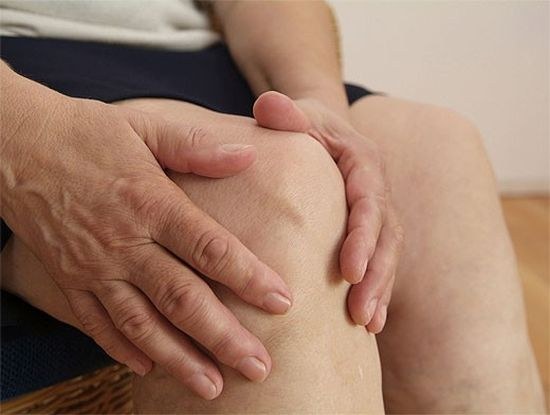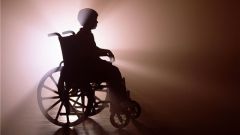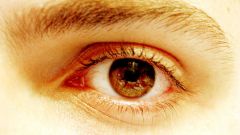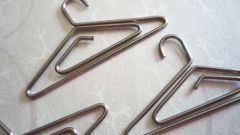Pain, crunches, blockade, restriction of movements and stiffness of the joints – this is not a complete list of symptoms in osteoarthritis. Each of them is individually able to poison a person's life, and their combination can easily make it unbearable.
Very often when osteoarthritis pain is felt in the knee, the lower leg (the ankle), etc. In some cases, for the treatment of osteoarthritis and arthritis even resort to surgery. However, that is not always effective method.
To get disability for osteoarthritis. However, not all. There is a certain category of patients who are referred for medico-social examination (MSE). It includes:
- patients with progressive osteoarthritis of joints within 3 years from the onset of the disease, suffering from frequent (more than 3 times per year) exacerbations;
- patients after surgical intervention in the treatment of osteoarthritis, who observed the violation, limiting their ability to live;
- those who suffer from severe disorders of the static-dynamic functions, which, in fact, becomes the cause of disability.
During the ITU will determine a group of disability. To do this, take a few steps. In the first investigated and analyzed clinical functional diagnostics: analyse the complaint, the severity of symptoms, etc. the Second stage involves social diagnosis, during which evaluated the ability of the patient to self-service themselves, as well as assesses patient's adaptation to the social environment and the extent of loss of earning capacity.
The first group give to those of physical activity because of arthritis is completely broken. Disabled persons of group I due to the developed the disease themselves are not able to walk, cook, eat, walk, learn, etc. Doctors say that that phase is usually when the diagnosed osteoarthritis of the hip grade 3-4, and with the defeat of the patella and ankle.
The second group is assigned to those who have motor function is partially lost, i.e. the person can move, but often he needs help from the outside. As a rule, the basis for the appointment of group II are: arthrosis of the hip and knee 3 degrees, ankylosis of the large joints, shortening of more than 7 cm, etc.
The third group is those who expressed moderate or slight restriction of joint function. That is, people may move independently, but with a considerably lower speed with more rest stops, etc. Among the reasons that lead to the III group of disability secrete coxarthrosis and gonarthrosis 2nd degree as well as combined deforming arthrosis of the limbs.
direct 7. with 8. arthrodesis 9. to put 10. to give 11. Italy 12. how 13. threat 14. the knee 15. the joint 16. groupinvariant 17. arthritis 18. the leg 19. put 20. put 21. put 22. Grup 23. group 24. kolanie 25. angina
Of course, that arthritis must be treated. Ignore pain is impossible. And besides, to direct the patient to receive disability can be a doctor.
Very often when osteoarthritis pain is felt in the knee, the lower leg (the ankle), etc. In some cases, for the treatment of osteoarthritis and arthritis even resort to surgery. However, that is not always effective method.
Who guide for disability
To get disability for osteoarthritis. However, not all. There is a certain category of patients who are referred for medico-social examination (MSE). It includes:
- patients with progressive osteoarthritis of joints within 3 years from the onset of the disease, suffering from frequent (more than 3 times per year) exacerbations;
- patients after surgical intervention in the treatment of osteoarthritis, who observed the violation, limiting their ability to live;
- those who suffer from severe disorders of the static-dynamic functions, which, in fact, becomes the cause of disability.
Medical-social examination is a necessary step in obtaining disability. And to avoid it will fail. It should take into account the fact that to pass this examination for confirmation of disability will need to constantly.
During the ITU will determine a group of disability. To do this, take a few steps. In the first investigated and analyzed clinical functional diagnostics: analyse the complaint, the severity of symptoms, etc. the Second stage involves social diagnosis, during which evaluated the ability of the patient to self-service themselves, as well as assesses patient's adaptation to the social environment and the extent of loss of earning capacity.
The division into disability groups
The first group give to those of physical activity because of arthritis is completely broken. Disabled persons of group I due to the developed the disease themselves are not able to walk, cook, eat, walk, learn, etc. Doctors say that that phase is usually when the diagnosed osteoarthritis of the hip grade 3-4, and with the defeat of the patella and ankle.
The second group is assigned to those who have motor function is partially lost, i.e. the person can move, but often he needs help from the outside. As a rule, the basis for the appointment of group II are: arthrosis of the hip and knee 3 degrees, ankylosis of the large joints, shortening of more than 7 cm, etc.
The third group is those who expressed moderate or slight restriction of joint function. That is, people may move independently, but with a considerably lower speed with more rest stops, etc. Among the reasons that lead to the III group of disability secrete coxarthrosis and gonarthrosis 2nd degree as well as combined deforming arthrosis of the limbs.
direct 7. with 8. arthrodesis 9. to put 10. to give 11. Italy 12. how 13. threat 14. the knee 15. the joint 16. groupinvariant 17. arthritis 18. the leg 19. put 20. put 21. put 22. Grup 23. group 24. kolanie 25. angina





